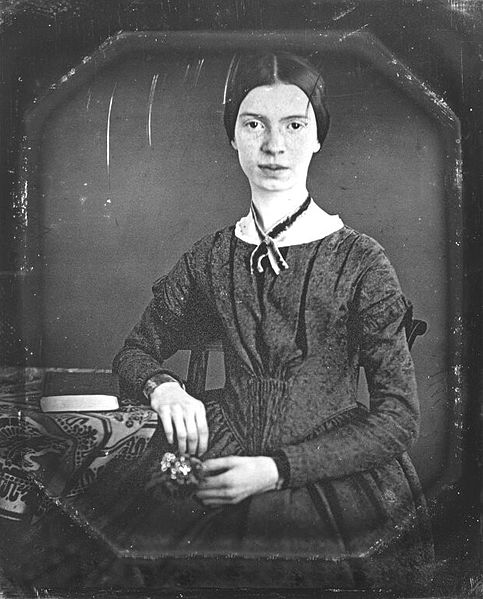|
|
Online Texts for Craig White's Literature Courses
|
|
|
Emily Dickinson Selected Poetry |
|
Questions: 1. Dickinson's poetry may seem to operate in some timeless realm, but how may it reflect its time-period of late Romanticism, bordering on early Realism?
1a. How may this poem possibly express Transcendentalism, which originated in Dickinson's native New England, and with which Dickinson was at least familiar?
2. What characteristics of Dickinson's style? How can you tell this is a poem by Emily Dickinson?
3. Compare this poem's form as "free verse" or "formal verse" with poems by Poe and Whitman (and other poems by Dickinson). (Comparative Study of Poe, Whitman, Dickinson)
![]()
[1.1]
A light exists in Spring
[1.2]
Not present on the Year
[1.3]
At any other
period—
[1.4] When March is scarcely here
[2.1]
A Color stands abroad
[2.2]
On Solitary Fields
[2.3]
That Science cannot overtake,
[Romanticism]
[2.4]
But Human
Nature feels.
[correspondence]
[3.1]
It waits upon the Lawn,
[3.2]
It shows the
furthest Tree
[3.3] Upon the furthest
Slope you know
[3.4]
It almost
speaks to you.
[4.1]
Then, as Horizons step,
[4.2]
Or Noons report
away,
[report=echo, resound?]
[4.3] Without the Formula of sound,
[4.4]
It passes, and we stay—
[5.1]
A quality of loss
[5.2]
Affecting our Content*,
[*contentment,
satisfaction]
[5.3] As Trade* had suddenly encroached
[*trade
= business, commerce]
[5.4] Upon a
Sacrament*. [Sacrament
= religious act or ceremony]

thanks to
http://imgarcade.com/1/spring-field/


